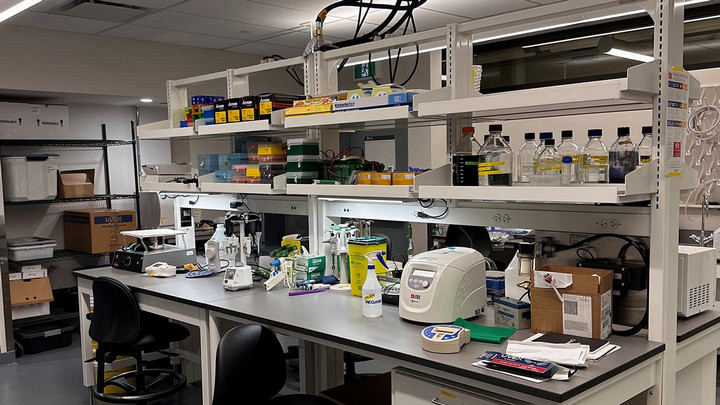Big share: of autoclaves and access
September 19, 2024

Sharing a trouble might halve it. In contrast, sharing a centrifuge can maximize its impact.
The distributed network of UVic Health Core facilities aims to enhance health research at UVic by providing researchers from different disciplines with access to advanced instrumentation, expert training and technical support to engage with each other and carry out world-class research.
Any of the Health Core’s spaces will be accessible and bookable by internal users and external companies or individuals. Two labs in the Bob Wright and Petch buildings—previously established as the BioCore by the Centre for Advanced Materials and Related Technology (CAMTEC)—have been integrated into the new Health Core, to coincide with a significant expansion in space and capabilities. The Office of the Vice-President Research and Innovation has also opened a specimen collection facility in R Hut and a flagship lab facility in Petch Building 025.
The establishment of the Petch 025 facility adds a brand-new 1,400 sq. ft. laboratory suite. This significantly increases the amount of biosafety level 2 space on campus, and includes multiple biological safety cabinets, cold storage and advanced instrumentation that enables all manner of health research in the areas of biochemistry, microbiology, cell biology and related areas of biomedical research. The doors are open to the whole campus community, and the Health Core is already becoming home to a wide variety of interdisciplinary health research.
“We have a whole range of users, from undergraduates to senior professors working in our facility,” explains lab manager Charmaine Wetherell, “although most are UVic graduate students.
“Many of our internal researchers are in non-biological fields like chemistry, engineering, and areas related to the social determinants of health, and they want to test something they’re working on using biological organisms, human specimens, or biomaterials that require safe containment,” Wetherell says. “We also have several start-up and biotech companies who work on a wide variety of things broadly classified as biochemistry. We provide training on the advanced instrumentation that we host, and we provide space for specialty equipment to both our internal and external users.”
Having a shared facility means more efficient use of equipment, increased training and teamwork. Much of the equipment is expensive to purchase, especially for a single project, takes up a lot of space, needs to be in a room that has biological safety approval, and requires technical expertise to run and maintain. The Health Core provides access to space and equipment, as well as training on techniques and guidance on obtaining the proper safety approvals.
The facility broadens the ability of researchers to undertake interdisciplinary projects and collect data on equipment they would not have access to in their own labs. Researchers from academia and industry can interact, share ideas and form collaborations. Students can meet people who may add to their knowledge or even help them advance their careers.
After all, rubbing shoulders is a proven way to spark conversations—and that’s always a good way to fire up ideas, partnerships and innovations.
-30-
Rachel Goldsworthy
